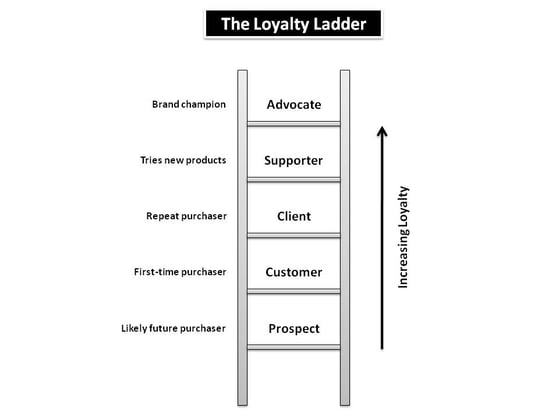November 21, 2022
 by Ajit Narayan / November 21, 2022
by Ajit Narayan / November 21, 2022

Customers expect a frictionless, personalized experience.
The shift in consumer behavior has led to a new marketing trend focused on building personal relationships between brands and their customers, known as “brand advocacy marketing” or simply “advocacy marketing”.
Advocacy marketing is the process of turning customers into brand advocates. It’s the best way to turn word of mouth into a positive force that drives your business forward.
An advocacy marketing strategy helps build mutually beneficial customer relationships with customers, promote your brand, and reach your target audience more effectively. It's an essential component of any digital marketing strategy.
Advocacy marketing involves partnering with customers to deliver social proof for a brand through a variety of channels, including emails, social media posts, blog posts, and video content.
It’s about letting customers speak for you. Advocacy marketing helps create a brand experience that leaves a lasting impression on customers. When they connect with your mission, vision, products, and services, they feel empowered to share about you.
Advocacy marketing is a great way to expand your marketing efforts’ reach, increase customer retention, generate referrals, and acquire new customers. It allows you to build a more engaged customer base.
“Turn left when your competition turns right”. A strategy – made popular by Harley Davidson’s Clyde Fessler – that caught on in the business and marketing world may not be that famous anymore. But it's still one of the best case studies to refer to if you want to build your brand and use advocacy marketing as one of the key strategies.
When the business community pinned its advertising budget on the quest for reach and impressions, Fessler put 80% of Harley's budget into advertising, public relations (PR), and promotions for existing customers. The magic that followed is nothing short of a legendary turnaround in branding.
Harley underwent a complete overhaul. They let their employees wear jeans to work, ride bikes, and represent the brand as it appealed to their customers. Their dealers also became a part of this makeover. This made the brand more personal and easier for customers to engage with it.
Harley’s example shows how advocacy marketing takes you from okay to awesome. But, like all good things, it takes time and effort.

Every Thursday, we spill hot takes, insider knowledge, and news recaps straight to your inbox. Subscribe here
Word of mouth is one of the most potent forms of marketing. Getting people to speak positively about your brand and products is challenging. Advocacy marketing can help you achieve this efficiently.
Customers want to identify with the brand they invest in. These brands reflect their values, habits, and preferences. But they don't suddenly become free endorsers just because you gave them a 10% discount. Around 70% of consumers leave a review for a business when asked, so focusing on building a strategic initiative that gets people talking is crucial.
Getting yourself in front of a large audience is intimidating. Advocacy marketing isn’t one-sided. To get optimal results, you should know where and how to begin.
Before building a brand advocacy campaign, get the basics out of the way. What are your goals? Who is your audience? What problems are you looking to address? Why are you thinking about advocacy at all?
Understanding what drives advocacy and works for your target audience can help you set some ground rules and give you a good head start.
When it comes to adoption, emotions drive people more than features or technicalities. As a brand, if you don’t strike an emotional chord with your key stakeholders, you'll have a marketing mix with a nice slide and some points-based ads, and that's about it. So, focus on building loyalty.

Source: Eight Leaves
Each key stakeholder associated with your brand has a unique voice and loyalty parameter. Think employee loyalty, partner loyalty, fan loyalty, and customer loyalty.
A tech stack for a brand advocacy program is a mix of tools, techniques, tactics, and content that can help design and deliver a great user experience.
Just purchasing software to help your marketing efforts wouldn’t do the job. Conduct research and implement and manage your tech stack to use the right software and strategically benefit your target audience.
An integrated tool with a mix of content curation, distribution, team management, tracking, and analytics capabilities should be ideal. It should integrate with other marketing tools on your website and social media.
Marketing automation software introduces the automation you need into your day-to-day advocacy work, freeing you to focus on more complex tasks.
Employees prioritize engagement. If you can't engage them, they will leave. To create strong brand advocacy, start by investing in your employees and building employee advocacy. Provide them with optimal resources and the right support to make them feel more fulfilled in their work and motivated to share about you.
Happy employees create a happy environment. Adobe is a great example of employee advocacy done right. Their people align with the company's vision and nurture good relationships.

Source: Instagram
An advocacy program focuses on creating brand awareness and increasing customer acquisition and retention. It cultivates brand loyalty and drives sales.
You can create a brand advocacy program in the form of a customer testimonial campaign, a referral program, or a social media campaign where customers can share experiences with your brand.
The best way to nurture brand advocates is to give them something to advocate for. Create an environment where your customers feel comfortable talking about your brand and giving you a shout-out.
You may encounter challenges when performing advocacy marketing and building your brand. Consider some of these pitfalls and how to get through them.
Brand advocacy doesn't have to start at full speed. Instead, start with a tried and tested strategy. Take it one step at a time; it's an evolution, not a revolution. Test one stakeholder segment at a time and grow both organically and through marketing initiatives.
In a fast-paced marketing landscape, staying nimble and adapting to changing conditions is critical. Many factors shape your brand advocacy journey, and you must be ready to adjust your course as conditions change.
Be patient, and remember that building brand awareness and preference takes time. With the right approach, your brand will become stronger, more valuable, and better positioned to achieve its marketing and business goals.
Expectations determine how you perceive results. You’ll be disappointed if you expect magic and nothing comes out of a hat. Use advocacy marketing to increase reach, awareness, and engagement. Anything beyond that can be a bonus and not necessarily the main goal.
For example, if your goal is to get leads, you might be better off pursuing other marketing initiatives. But if you want to build reach to make your targeted marketing and sales initiatives more effective, this is your go-to place. So be prepared to deal with expectations. Don't over-promise.
As with the stakeholder segments, narrow your marketing efforts and focus on specific areas. Don't go over the board. Create value rather than volume.
Because people consume tons of content every second, they typically skim general and repetitive content. Insightful, value-added content finds its way to your audience. So focus on creating value for your brand advocates.
You can't develop a program, set it up, and expect it to work. You need to provide the right resources and support your brand advocates as best you can. Invest in ongoing training, feedback, ideas, and conversations. You'll be amazed at how much they can help you succeed when given the right support.
Select a few key performance indicators (KPIs) and track them closely. Examples of KPIs can include how many people signed up for your campaign, downloaded your ebook, commented on your blog post, shared your campaign, repined your repins, and so on. These are just a few of the many things that you can measure.
Collecting and analyzing data on your efforts helps you refine your advocacy marketing and make it more successful.
Advocacy marketing raises brand awareness, product consideration, and brand loyalty among stakeholders. It’s effective, easy to implement, requires no additional investments, and is highly scalable.
Brand advocacy isn't a one-size-fits-all approach. But the beauty of it is that anyone can build it. You just need the right knowledge and resources.
Customer reviews are key to building brand advocacy. But how do you analyze and use these reviews to drive marketing and advocacy? Find brand advocates through your reviews and learn more about review tracking and brand building using G2.
Ajit Narayan is a marketing and advertising industry veteran. He’s currently the CMO of Socxo, a global Saas company focused on building organic social media marketing solutions. Ajit has built marketing strategies for two brands: Socxo and Socxly.
If you're in sales or customer success, you know how your company is pulling out all the stops...
 by Sudipto Paul
by Sudipto Paul
How do you get hundreds and thousands of employees excited enough about your company updates...
 by Anita Lankinen
by Anita Lankinen
Customers can now compare product alternatives with a single click. However, the endless...
 by Megan Wenzl
by Megan Wenzl
If you're in sales or customer success, you know how your company is pulling out all the stops...
 by Sudipto Paul
by Sudipto Paul
How do you get hundreds and thousands of employees excited enough about your company updates...
 by Anita Lankinen
by Anita Lankinen


